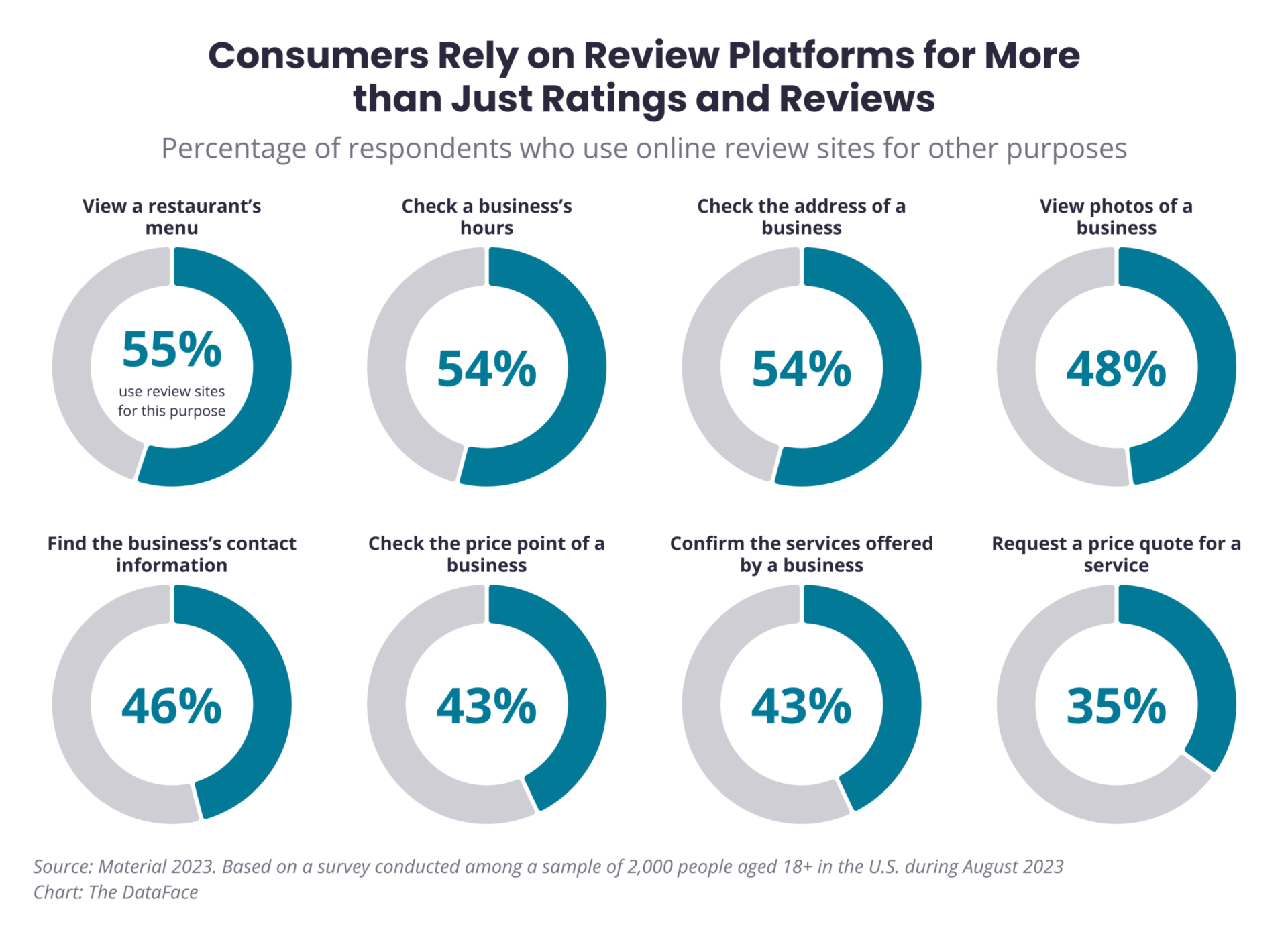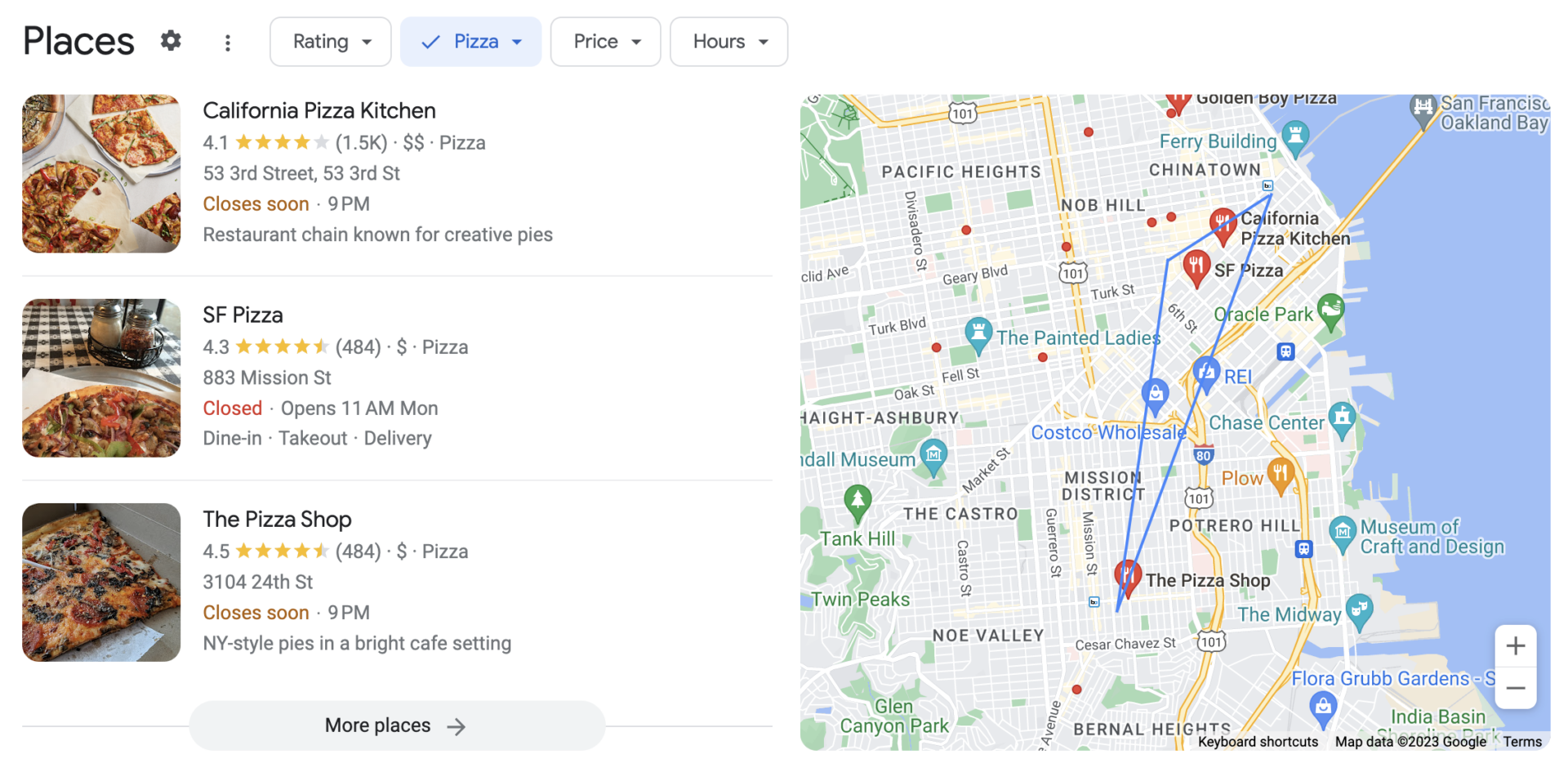Webinar Recap: Brand Loyalty Dies as Search, Social, and Reputation Converge
Local Memo: Links Aren’t a Top Ranking Factor Anymore, per Google

Local Memo: Links Aren’t a Top Ranking Factor Anymore, per Google
In this week’s update, learn about the diminished importance of links for search; reasons for simplification of the Google SERP; Google results showing within TikTok; a survey showcasing trustworthiness signals in reviews; clustering patterns in the Local Pack; and a guide to the rules for Google Business Profiles.Links Aren’t a Top Ranking Factor Anymore, per Google
Google’s Gary Illyes made news with some of the answers he offered during an AMA session at PubCon in Austin, Texas on September 21. Perhaps most notably, Illyes told the audience that links — the basis of Google’s foundational algorithm, PageRank — are not a “top 3” ranking signal today and have not been “for some time.” Illyes also stated that content continues to be the top ranking signal, with the other key factors differing from site to site. Google has been downplaying the importance of links for a couple of years, but this is the first statement indicating how much their role has diminished. He was also asked about the influence of clicks on ranking, likely spurred by news last week of former Google quality engineer Eric Lehman’s testimony in the federal antitrust investigation, where Lehman stated that “Google's position is to not provide a clear message about whether it's using the click data — even though it is — out of fear that search engine optimizers or others could try to influence the rankings.” Illyes answered “Technically, yes,” to the question of whether Google uses click data in ranking, explaining that RankBrain includes historical click data. According to SEO Joel Headley, however, click data should be thought of as a quality signal, not a direct ranking factor.Google Tells Us to Expect More Simplification of Search
Also in comments at PubCon, Google’s Gary Illyes addressed the speculation of some SEOs that the removal or diminishment of rich results from Google’s SERPs — including How To and FAQ results — was not being done in order to prepare for the addition of AI-powered results in Google search, similar to those displayed in the Search Generative Experience (SGE) interface. Illyes stated, “The ultimate goal is not for AI. It is to make results that look clean” and that give Google the opportunity to experiment with unspecified “other things.” Illyes said that Google was focused on removing features that users didn’t find helpful, suggesting that more features might be on the chopping block.TikTok Now Showcasing Google Results
According to a report from Business Insider, Google and TikTok are launching a trial partnership that will embed Google search prompts into the TikTok app and might also feature Google search results on TikTok. An early screenshot shows a Google search prompt in the middle of a TikTok search result page. In a statement, TikTok said the company is “experimenting with third-party integrations within the TikTok app, including a test with Google.” With studies showing that TikTok users are turning more and more to the app for search, the move seems to benefit Google by giving those same users a path to the search engine from within TikTok. The benefit to TikTok is less clear at this point.#TikTokSearch now displaying external links to Google Search. @MattNavarra pic.twitter.com/cAxNufLA3p
— Radu Oncescu (@oncescuradu) September 19, 2023
Yelp Survey Highlights Trustworthiness Signals in Reviews
In a blog post, Yelp relays the results of a survey of 2,000 U.S. consumers from Material which finds that:- 93% of consumers read reviews before visiting a business.
- 76% say they are reading more reviews than ever before.
- 85% want publishers to inform them if a business has ever incentivized reviews.
- 68% said they wouldn’t visit a business if they learned that it incentivized reviews.
- 65% admitted they would write a more positive review, and 61% said they would select a higher rating, if asked to review a business.
- 54% said they would not trust a business that asked for reviews.
- 68% said they’ve been asked by a business to leave a review.
- 86% said they’d be more likely to look past negative reviews if a business responds to reviews constructively.
- 70% said they’re more likely to write a review if the business responds to reviews.
 Courtesy Yelp / Material
Courtesy Yelp / Material
Clustering Patterns in the Local Pack
Erin Jones has a post on the Sterling Sky blog that summarizes still-relevant research conducted by SEO Mordy Oberstein in 2018 on the 2:1 ranking pattern in Google’s Local Pack results. Oberstein observed that Google seems to favor Local Pack results that are closer to each other geographically than the actual range of businesses in a given city would dictate, with the average distance between businesses growing or shrinking depending on the size of the city. The 2:1 pattern, which seems to appear no matter how large or small the geographical area — even when the search comprises an entire state — means that two of the featured businesses are often close to each other, while the third is further away. This clustering pattern appeared in about 64% of the city-level results Oberstein studied, and appeared to be based on assigning a center point to each geographical area, close to where the two nearest listings were located. Such results seem designed to offer the best nearby options plus another for diversity’s sake that is further away, though Oberstein points out that this pattern does not satisfy all search intents well. The 2:1 pattern, which tends to form an isosceles triangle, demonstrated in my own search for “pizza san francisco”
The 2:1 pattern, which tends to form an isosceles triangle, demonstrated in my own search for “pizza san francisco”
Understanding GBP Guidelines
Sherry Bonelli offers a tour of the regulations and guidelines for Google Business Profiles that will be of interest to anyone who needs a refresher on the topic. This is especially important given that Google updated and reorganized its help documentation in July. Bonelli points out that it’s incumbent on businesses to understand the guidelines or risk suspension of listings. She covers four key areas:- Which businesses are eligible for Google Business Profiles and which are not
- Guidelines for updating your profiles
- Rules for business names
- Listing your business hours
- How account-level restrictions work
Subscribe to Local Memo!
Signup to receive Local memo updates and the latest on localized marketing, delivered weekly to your inbox.




